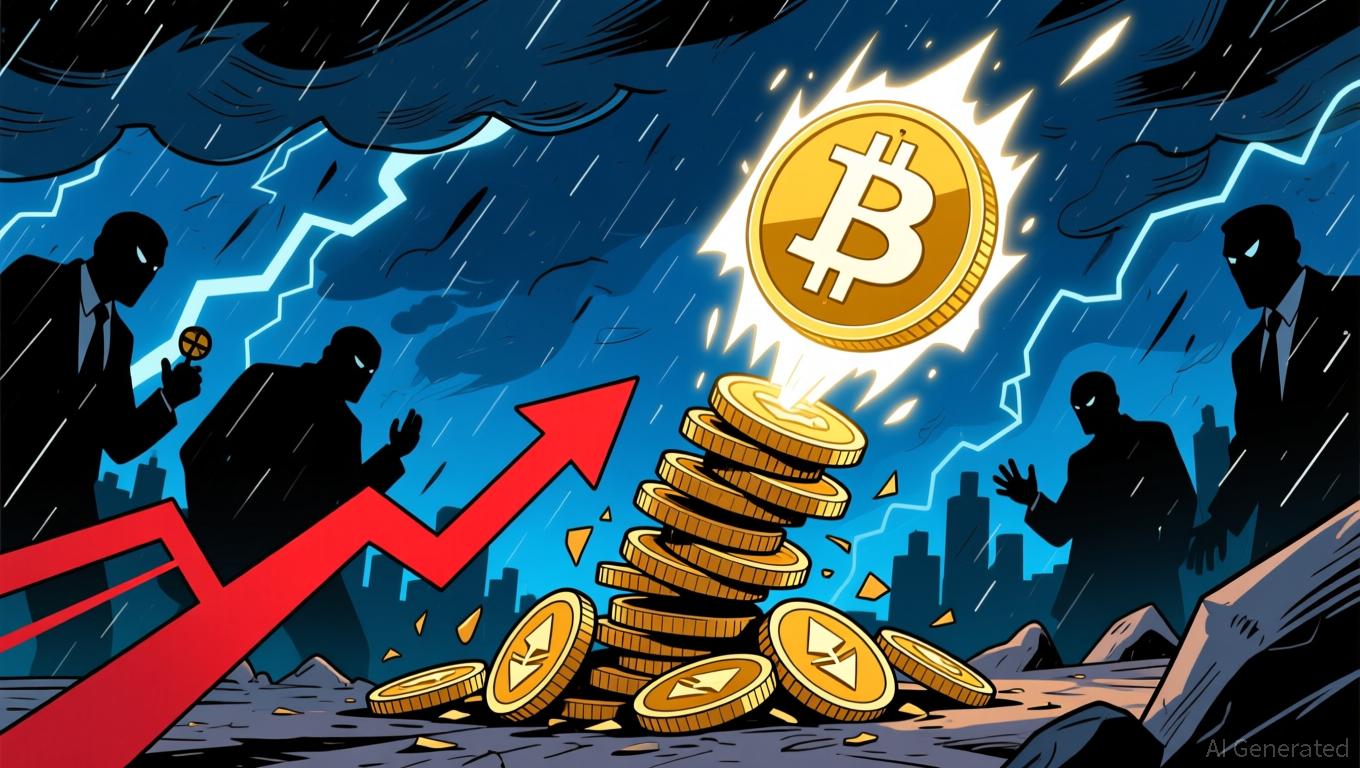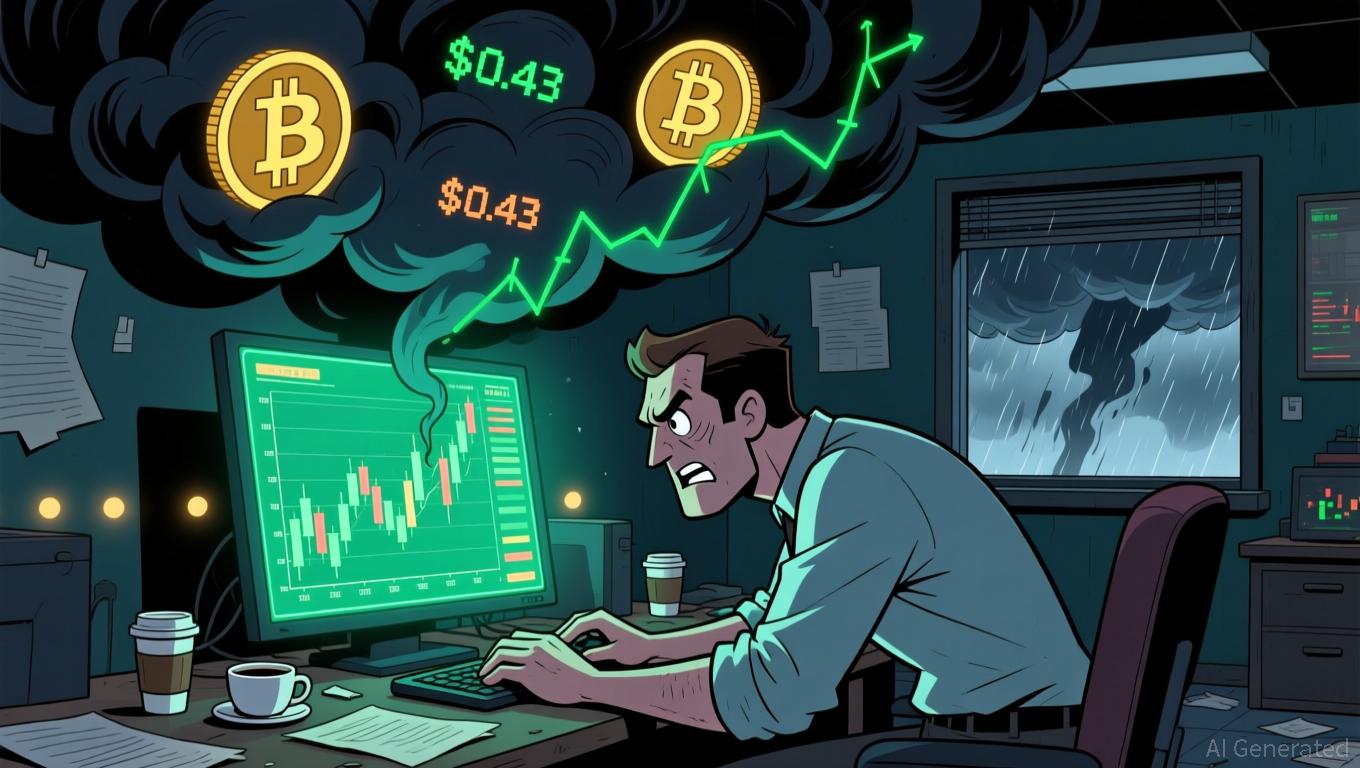Bitcoin Updates: Tether's Unstable Backing and Bitcoin's Rally Intensify Liquidity Shortage
- Bitcoin's price surge triggered Tether (USDT) outflows, raising liquidity risks as reserves face S&P downgrade. - NYDIG reports $3.55B ETF outflows in November, linked to corporate trades and algorithmic stablecoin losses. - S&P cites 5.6% Bitcoin exposure in USDT reserves, exceeding overcollateralization buffers, risking undercollateralization. - Analysts warn of self-reinforcing cycles as Bitcoin rallies coincide with Tether redemptions, straining liquidity. - Tether's 24% high-risk assets in reserves
The latest surge in Bitcoin prices has sparked significant outflows of
The vulnerability of Tether’s reserves has worsened after S&P Global Ratings downgraded USDT’s stability score to “weak,” its lowest rating. The downgrade was attributed to Tether’s rising allocation to riskier assets, with Bitcoin now making up 5.6% of USDT’s reserves—surpassing the 3.9% overcollateralization margin.

Despite USDT maintaining its lead in the stablecoin sector with $184.4 billion in circulation, the agency suggested that greater transparency and a reduction in risky asset exposure could help restore its rating. Nevertheless, the current trends mark a pivotal moment for the crypto industry, where tightening liquidity and increased regulatory oversight may challenge the market’s durability in the near future.
Disclaimer: The content of this article solely reflects the author's opinion and does not represent the platform in any capacity. This article is not intended to serve as a reference for making investment decisions.
You may also like
Bolivia Turns to Stablecoins to Address Inflation and Currency Instability
- Bolivia legalizes stablecoin integration into banking , allowing crypto-based accounts and loans to combat inflation and currency devaluation. - Crypto transaction volumes surged 530% in 2025, driven by $15B in stablecoin use as businesses adopt USDT for cross-border payments. - Policy mirrors regional trends, with stablecoins recognized as legal tender to stabilize the boliviano amid 22% annual inflation and dollar shortages. - Challenges include AML safeguards, tax frameworks, and public trust, as regu

Bitcoin Updates: Bitcoin's Decline Sparks Altcoin Battle: ADA's $0.43 Support Faces Pressure
- ADA holds $0.43 support as Bitcoin’s seven-month low of $80,000 pressures altcoin market volatility. - Altcoin fragility stems from Fed’s high-rate signals, reduced institutional inflows, and technical breakdowns in key resistance levels. - Bitcoin’s $90,000 support breach triggered cascading liquidations, while ADA’s $0.43 level shows increased on-chain accumulation. - Infrastructure innovations like GeekStake’s staking protocol aim to stabilize networks during volatility without price forecasts. - Mark

Bolivia’s Digital Currency Bet: Navigating Volatility with Stable Solutions
- Bolivia's government permits banks to custody cryptocurrencies and offer crypto-based services, reversing a 2020 ban to combat inflation and dollar shortages. - Stablecoin transactions surged 530% in 2025, with $14.8B processed as Bolivians use USDT to hedge against boliviano depreciation (22% annual inflation). - State-owned YPFB and automakers like Toyota now accept crypto payments, while Banco Bisa launches stablecoin custody to expand financial inclusion for unbanked populations. - The policy faces c

Switzerland's Postponement of Crypto Tax Highlights Worldwide Regulatory Stalemate
- Switzerland delays crypto tax data sharing until 2027 due to ongoing political negotiations over OECD CARF partner jurisdictions. - Revised rules require crypto providers to register and report client data by 2026, but cross-border data exchange remains inactive until 2027. - Global alignment challenges exclude major economies like the U.S., China, and Saudi Arabia from initial data-sharing agreements. - Domestic legal framework passed in 2025, but partner jurisdiction negotiations delay implementation u
